Note
You mentioned in a post that Taro Kudo worked at Telenet and I'm curious which games he worked on, given that I wasn't able to find out any info on that (as opposed to fellow Telenet to Square to Lovedelic dev Kenichi Nishi, who I could easily find info on his Telenet work)
To my knowledge, Kudo was never credited in any Telenet production. The source for this information is this interview (Japanese only) where he states that he had worked there between leaving Konami and joining Square. Axelay launched in late 1992 and Super Mario RPG's development began in early 1994. One can estimate that he worked there for an uncertain amount of time during the year 1993. He also says his experience there was mostly a leisurely one, with little actual time spent working, which indicates that he may not have been assigned to any ongoing project. Another possibility is that the project he was working on never made it to market.
https://news.denfaminicogamer.jp/interview/171030
4 notes
·
View notes
Text


Despite its portable design, the prohibitive prices of durable alkaline AAs, in tandem with the screen's inability to produce a bright image under the beaming Portuguese sun, caused my experience with the Game Gear to be a primarily indoors one - no less enjoyable because of it.
123 notes
·
View notes
Text

Akira Toriyama and his son Sasuke playing Dragon Quest 3 some time in the late 1980s.
May he rest in peace.
Image credits: Atsushi Onodera, The Yomiuri Shinbum (X07098), 1988.
8K notes
·
View notes
Text

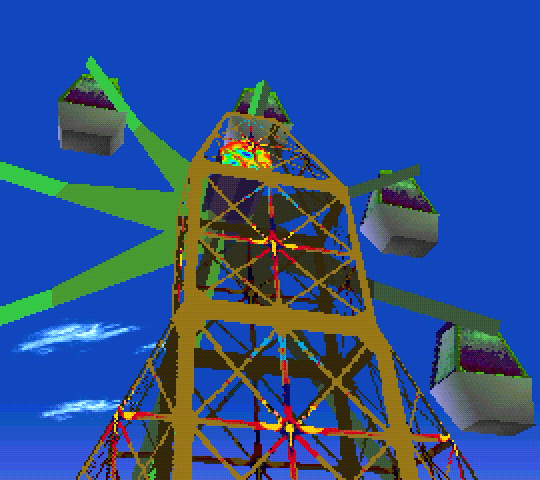


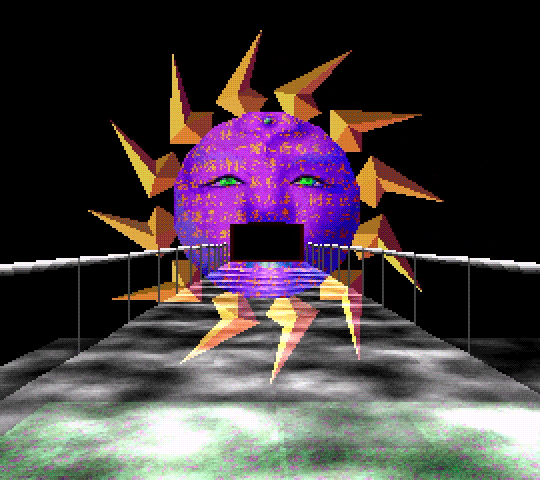
LSD (エルエスディー)
LSD: Dream Emulator
(PS1, 1998)
449 notes
·
View notes
Photo


Bāgā: Burger Burger - Rythmics - 1997
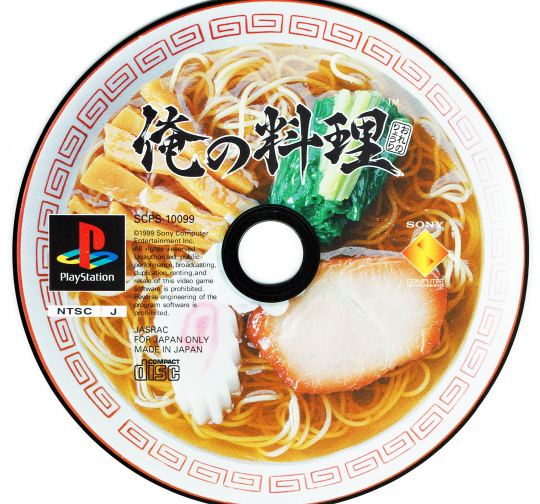

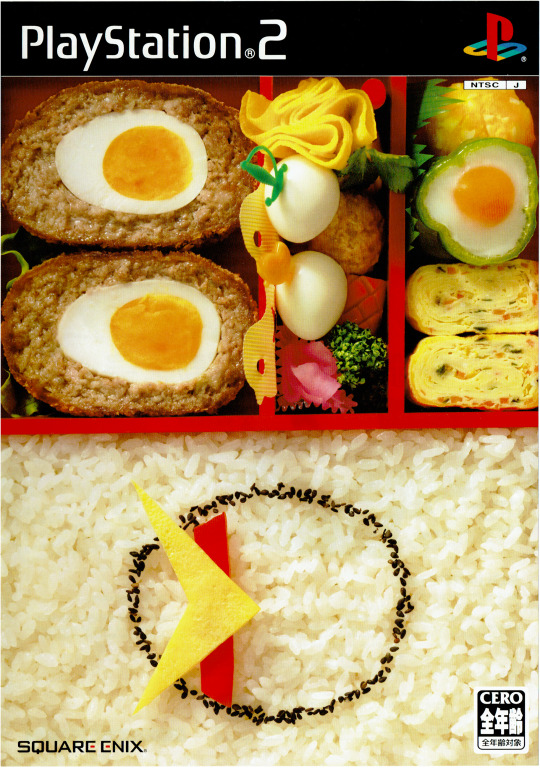



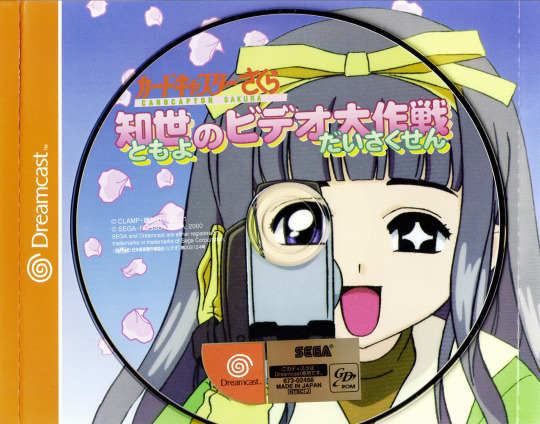
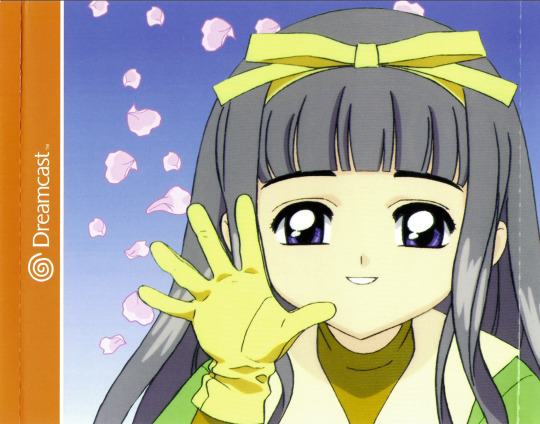
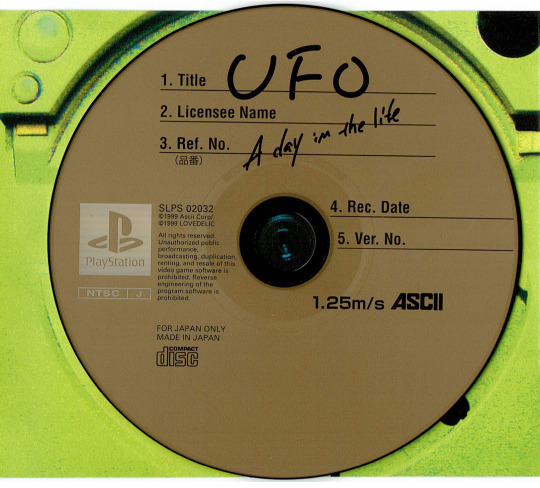
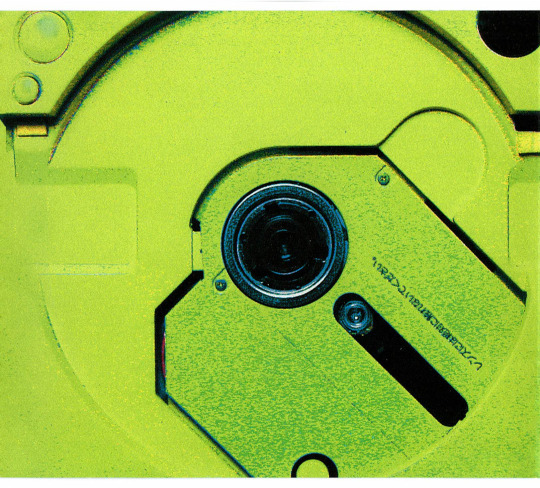
Visual narratives in Japanese game packaging: before and after.
Ramen: Ore no Ryouri - Argent, 1999
Bento: Hanjuku Eiyuu 4: 7-Nin no Hanjuku Eiyuu - Square Enix, 2005
Kincho: Ka 2 Rettsugō Hawai - Zoom, 2003
Shashin: Cardcaptor Sakura: Tomoyo no Video Daisakusen - SEGA, 2000
Eirian: UFO: A Day in the Life - Love-de-Lic, 1999
#Visual narratives in Japanese game packaging#ore no ryouri#ka 2 let's go hawaii#hanjuku eiyuu#card captor sakura#ufo: a day in the life#burger burger
1K notes
·
View notes
Text
Le vrai chercheur d'amour: JUNKO, d'après Yoshiro Kimura
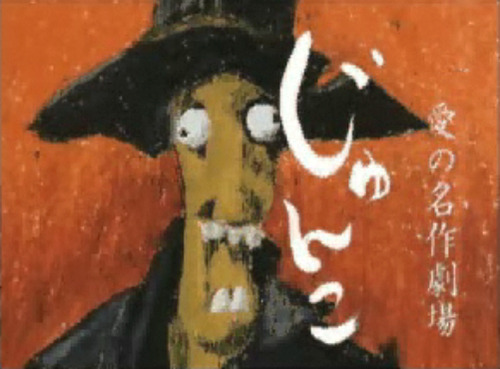
In all my years as a videogame player and as an investigator, I’ve had the opportunity to contact many of the designers whose work has inspired me the most. Such fortunate fact of my life has also presented me with an opportunity for an improved understanding of the reality of game creation, particularly in Japan, the Mecca of this intricate specialty which is yet to be widely recognized. Pertaining the Japanese ways of design, I soon came to the conclusion that the truly emblematic works mostly originated from the authors who presented a greater awareness of European culture - mostly its Arts and History - instead of an excessive reverence for a specific post-modern Japanese legacy of references in entertainment. Some of these designers, as was the case of Haruhiko Shono, displayed an uncommon reverence for French culture, especially from a period when France was culturally equivalent - and indeed worthy of rivalry - of the United States.
When we analyse the games of Yoshiro Kimura, though bearing the distinct seal of idiosyncrasy that was originally the cornerstone of Nishi’s Love.de.Lic, we perceive an uncommon cognizance of a blend of different cultures. As a man who has travelled around the world for the sake of gathering small moments of cultural revelation and exchange, Kimura’s games bear many traits intrinsic to different cultures as portrayed in the many characters that form the society of Chulip; or in the Anglo-Saxon references present in Little King’s Story. Although a respected game creator among a small society of videogame enthusiasts, his sphere of interests goes well beyond digital applications, being a confessed admirer of children’s literature - Le Petit Prince, by Saint-Exupéry being his favourite book - and of experimental animation cinema.

The following is a case of when Yoshiro Kimura evaded the game creation channels in order to create, in his own spare time between the production of Chulip and Rule of Rose, a small animated movie made with the participation of a few of his friends. Junko was a project entirely created in the comfort of his own bedroom which, he confesses, was a complete mess during production, with the entire set occupying most of the space. Of the two characters, animated using stop motion, Kimura created the miserable beggar who searches the abandoned town for anything that could mitigate his anguished existence. Kimura explained me how he wished to make this character look indigent by using a few teeth popping out of the mouth, as well as worn out black clothes. On the other hand, the female character representing the unattainable woman was created using a rather confusing Japanese female stereotype: on the one hand, a polite and helping stance; on the other, an figure of a selective and independent woman who, in spite of her appeal, doesn’t welcome a(ny) man into her life.

One among Kimura’s friends participating in this small project was none other than Hirofumi Taniguchi with whom, at first, the director had a few disputes as to the ideal tone for the soundtrack theme. Eventually, Taniguchi got it right and the final result can be heard throughout the picture. In the year of its release, in 2004, Junko was only available for viewing in the website of Dagaya Films. Since this piece of film is extremely rare and of interest to the followers of this ex-Punchline game director, I saw little or no choice to present a small blog post in return for Kimura’s kindness for letting me view this almost private endeavour which, then again, confirms his unusual talents as well as his affinity to French culture and language.
Update: OnionGames’ YouTube channel has the film available in high quality and with subtitles. It’s available for members only, but the fee is quite modest.
66 notes
·
View notes
Text
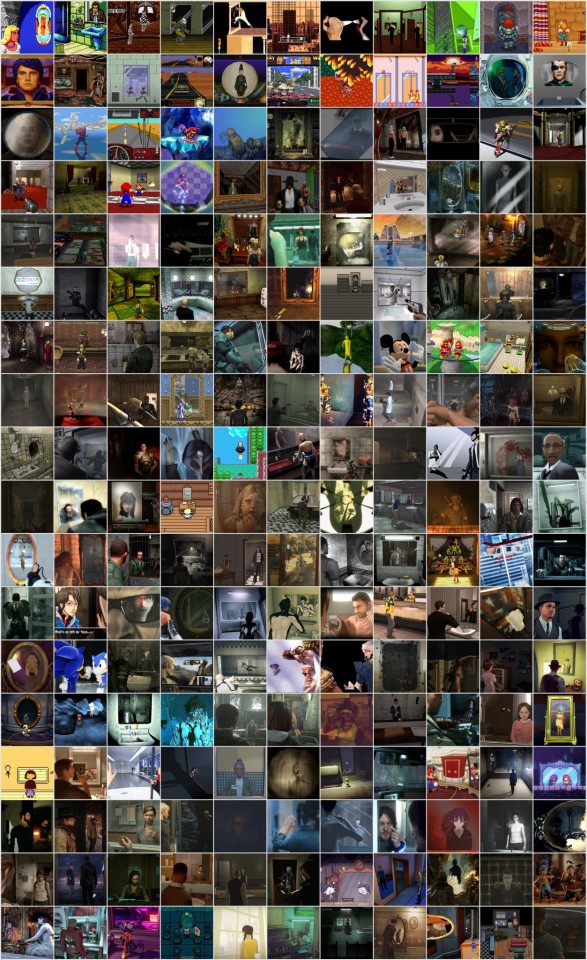
I may have lied when I mentioned earlier that I was satisfied with the last version of this list. There were a few essential submissions I simply had to honour, and so another row is added to this grid.
You can find the full list here (recent entries in black).
For added detail, a full-sized picture is also available.
Further submissions are always welcome.
39 notes
·
View notes
Text

Rule of Rose was released in Japan 18 years ago.
100 notes
·
View notes
Text

Eastermind began with posts about Japanese food, namely my earliest attempts to cook Asian-style dishes at home. My skills have somewhat improved since. I always like to give my noodle soup dishes the smallest Portuguese-Japanese fusion twist by adding an unexpected element; in this case, a slice or two of fine salpicão de lombo, a smoke-cured pork loin, which has a pungent aroma but does not interfere with the flavour profile - instead, I find that it elevates it.
Please enjoy a hearty, warm meal of your own some time soon.
18 notes
·
View notes
Text
Last year in classic games

For motives I cannot expand on with much glee, I found a little more time than usual this year to reduce my seemingly endless backlog of classics. Despite all the fine new releases 2023 has greeted us with, I was able to finally dive into this eclectic handful of games I gathered over time. It is perhaps no coincidence that I reached out for more direct game experiences than story-driven ones. I find myself increasingly drawn to games designs that are mindful of the player's time as a commodity not to be carelessly squandered.
One note, if I may: I would like to inspire my readers to progressively discard the use of the word retro this year. We are all of advancing years and wisdom, I trust. The introduction of the term retro to the videogame vernacular was a gross mistake furthering the abhorrent notion that games were as ephemeral in their nature as fashion. It is a purely commercial designation by which to profitably repackage old software as a category of its own, originating from the same minds that considered games as mere novelty trinkets of limited marketable lifespan.
It is up to the player to individually decide on an older game's appeal, whether they may be discovering it for the first time or revisiting it for the umpteenth one. This is not only an appeal for those of you who write about games in any capacity, rather to anyone who takes videogames as a serious interest and communicates with others about this the object of their predilection. Thank you.

This loose cart came with a Famicom bundle auction I won in 2009, if memory serves. I turned on the Famicom and tested it merely to verify if it was still in working condition and found myself engrossed in that trademark Pajitnov/Pokhilko elegant approach to game design. As per the cassette's label, Hatris was originally a concept developed in collaboration with ParaGraph, a Russian studio that went on to develop specialized professional software, a year before the Bullet-Proof Software licensing deal. They produced a few games in the turn of the decade that were rather unusual and, some would say, even visionary. I recommend that you look up their story, if you're curious.

The only entry from the group that isn't of Japanese provenance - though it is a Japanese edition - I played it for purely nostalgic motives, perhaps a yearning for a certain pixel, palette and parallax that resoundingly evoke a time I was fortunate enough to experience, first-hand. If I may be honest, I purchased the game for the visual value of its unique cover art, which I deem superior to the US edition's. In saying that, I must highlight that the original Amiga game box art was quite accomplished.

In the Summer of 93 while on holiday at the beach, there was a French Nintendo magazine for sale whose purchase I could not resist. It was very common to find Spanish, English and French publications at the time in Portugal. This edition had a striking four page preview of this Jaleco gem, Ikari no Yōsai, or Operation Logic Bomb as it was named in the West. For years I searched the PAL version in vain, then ultimately decided to import it on account of - you'd never guess! - the superior box art. Playing it this year at long last, I was instantly reminded of an old Game Boy favourite, Fortified Zone, which I now know to be its prequel. Most top-down shooters are best played in co-op. Ikari no Yōsai is strictly and single-player affair and not once did I miss the absence of a friendly companion.

Keio Flying Squadron 2 first came to my attention via an infamous Saturn demo disc, which came into my hands through circumstances I have since forgotten about. I use the word infamous because the entire game code was available in the disc and the level select cheat code enabled me to unscrupulously play the entirety of the game for no additional expense - at only the cost of missing out on the colourful Studio Pierrot anime FMV interludes.
Having played the sequel first, I was somewhat disenchanted to learn the original game did not feature any platforming segments, it being a pure scrolling shooter in the same whimsical vein as Parodius or, say, an AirZonk. Still, a jolly good time with the old three buttons.

For reasons that will not be immediately apparent to younger reading audiences, I pride myself in having completed most Shinobi games, The Revenge Of and GG being my preferred ones. Shin Shinobi Den, or Shinobi X in Europe, was a game not readily available from my usual game dealers. I eventually borrowed the PAL version once, though not nearly long enough to master it. I finally saw it through this year, mere days before SEGA announced a new episode. While the live action clips looked a tad maladroit in the 1990s, they came to acquire that nice patina I now look for in classic games.
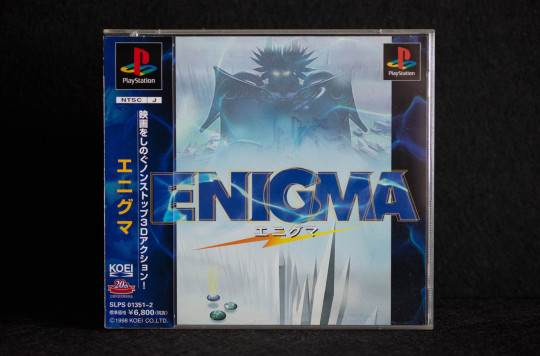
Omega Force was known to take the sporadic breather from producing some of KOEI's most cherished and profitable series. I distinctly remember enjoying Destrega quite a bit in its day, a game quite unlike any other. What their 1998 Enigma lacks in consistency and originality, it more than amply makes up for with its own bizarre concepts, extravagant characters and unexpected genre fusions. Of all the titles in this post, this was the one whose pace felt the most sluggish, and needlessly so.

Microsoft Game Studio Japan release schedule plans were not at all kind on this, their first production, Magatama. Earlier this year I praised this era for its highly inspired H&S action adventure titles and even spent a few days delighting myself with the likes of Blood Will Tell, Nightshade, Bujingai, or Chaos Legion. This most unusual creation, developed by the aptly-named Team Breakout - a group composed of many talented ex-Square employees - is one among the finest of the era. Sadly, it did not do enough to persuade players at the time that it was a better purchase than Otogi or its sequel. Playing it with my mind and heart set back in time to 2003, I can say that this misguided consideration may not have withstood a second thought.

I've long wanted to write an extensive article on Japanese firefighting games. In fact, I have the structure laid out for a Japanofiles entry gathering moss in my Tumblr drafts for over a decade now. For a brief period this year I convinced myself I could finally fulfil this aspiration and resumed Sakurazaka Shouboutai as research. Developed by Racdym - later Racjin - for Irem, it is every bit as good as Firefighter F.D.18 or Hard Luck, and in many ways more inventive from a conceptual standpoint. While Konami and Spike found a way to have their games released in the west, Sakurazaka's poor regional sales performance clearly accounts for Irem's reluctance to bear the cost of an overseas ticket.
#hatris#paragraph#bullet-proof software#wolfchild#mega cd#Ikari no Yōsai#operation logic bomb#fortified zone#jaleco#super nintendo#keio flying squadron#victor entertainment#shin shinobi den#shinobi x#shinobi legions#sega saturn#enigma#omega force#koei#magatama#xbox#Sakurazaka Shouboutai#irem#racjin#racdym
27 notes
·
View notes
Text





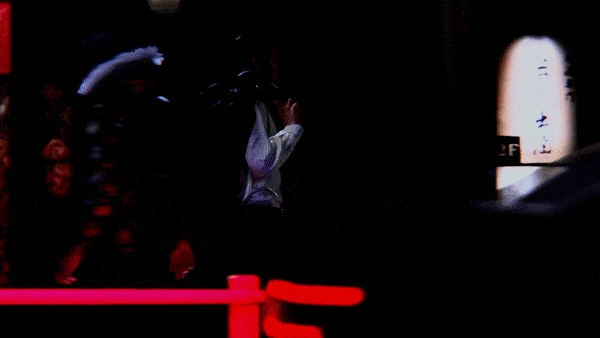
I've lost contact with the Ryu Ga Gotoku series after the fourth episode, which I believe I still covered to a small extent in a post here at the time. I still pay close attention to the studio's work, and have sampled every episode without exception. Sadly, these are time consuming games surfacing at a moment in my life when availability to play videogames is scarce.
Today I tried Like a Dragon Gaiden: The Man Who Erased His Name, and was positively impressed by its presentation, which always seems to be the case with each iteration. This intimate scene in a bar is a common one in both the main series and its inspired spin-offs. But the manner in which it is directed and the subtlety of its countless little details is a full notch above the last entry - particularly if one considers that these may very well be real-time generated visuals.
18 notes
·
View notes
Note
Have you heard of “The Saboten Man” by Masahiro Fukuda? Feels like a game that would really be in your taste
I am quite familiar with it and, as you correctly point out, it is right up my alley. It is a unique project in the context of Fukuda-San's career, considering the fact that the rest of his work consisted mostly of character design for softcore erotic 3D CGI CD-ROM titles such as the Barbara trilogy or General Affairs.
I wished I had the chance to inquire him regarding the motives behind so irregular a career path, but alas he passed away in the early 2000's.
One notable exception would his collaboration with Highwaystar as the character designer for the equally obscure 1999 PS1 game JailBreaker.
20 notes
·
View notes
Text
Scene from the TV Asahi's long-running police detective show Tokusou Saizensen (Special Investigation Frontline). This comes from episode number 348 entitled Computer game 0 seconds before explosion!, which was aired January 25, 1984. The episode itself was shot in late 1983.
Source: @hakaima_taka
20 notes
·
View notes
Text
Etched into stone
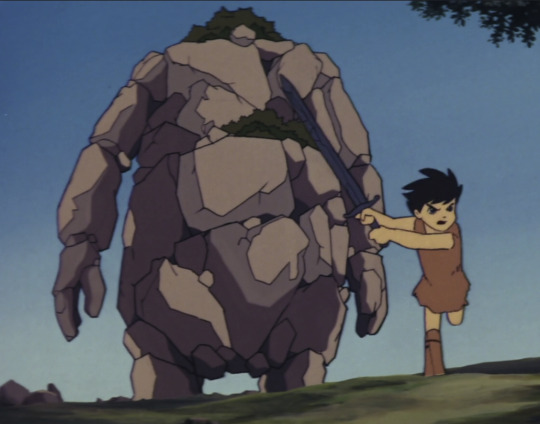

Here and there, over the last 18 years, I have written most everything I ever wished to write about Wanda To Kyozou. However, I don't believe I've discussed how influential Isao Takahata's 1968 film Taiyō no Ōji Horusu no Daibōken was to Ueda's work, this game in particular.

Before anything else, I'd like to establish a certain degree of verité. This classic animation has not only been mentioned by Ueda on a few occasions, the actual DVD can be seen in the booklet included with the Japanese limited edition of the game's re-release on the PS3.
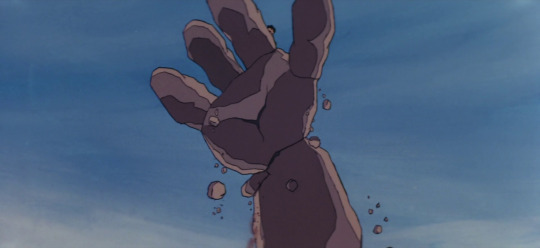
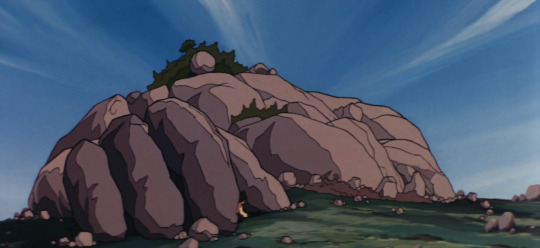
From its size to the manner in which it moves, there are several similarities between the colossi and Mōgu, especially the first of them all, Valus. Notice the birds hovering above their heads.

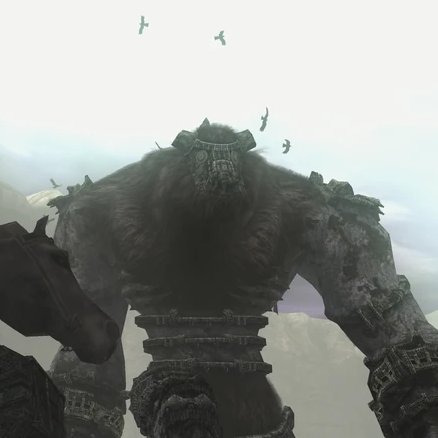
Mōgu is a gentle titan afflicted by a splinter in his shoulder. Horus discovers that the splinter is in fact the magical sword of the sun. Rooted in Arthurian legend, pulling it out mirrors the necessary force which Wander needs to exert to inflict damage on a colossus.


Horus' sword of the sun also suggests an interesting link with Wander's ancient sword, in that both blades are able to magically gather light as a defining characteristic.
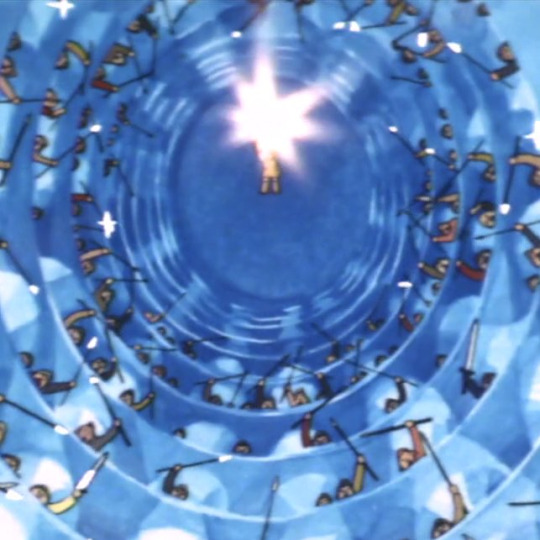
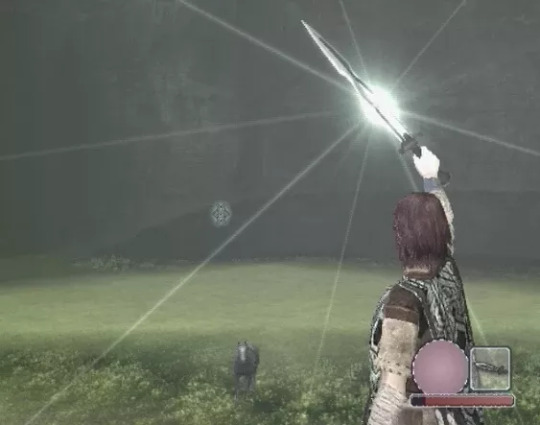
Horus defeats a giant pike using his axe and spears, a confrontation not without its share of parallels with Hydrus'. While this 7th colossus is more dragon than fish-like, the combat requires holding fast to the creature as it submerges. Also, early concepts showed Wander carrying a spear.
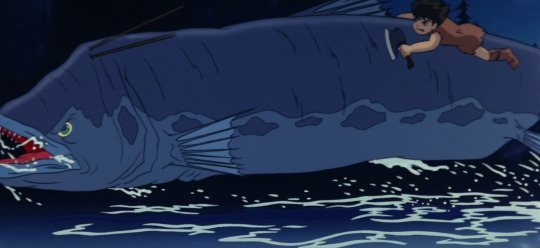

A more speculative connection, perhaps, is that of the villain Grunwald. Despite being an average-sized human, the first scenes of the film depict him as a giant on the horizon. The presence of horns alone is noteworthy, more so in combination with his shining eyes.
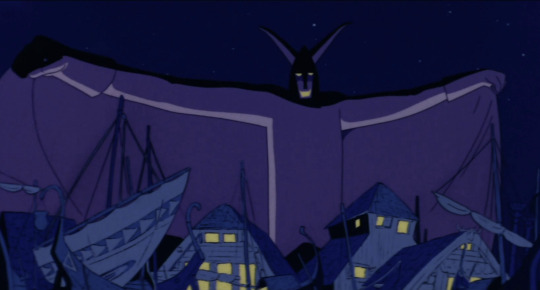
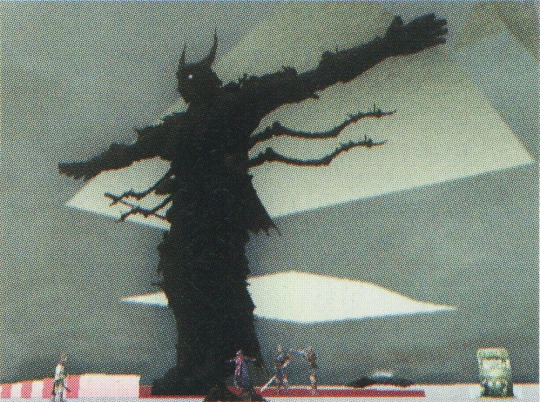
On a final note, the film's influence is just as discernible in Ico. Yorda (Yoruda) shares many resemblances with Hilda (Hiruda), including their inherent special abilities, their family bond with a villain representing absolute evil, as well as the resulting internal conflicts.

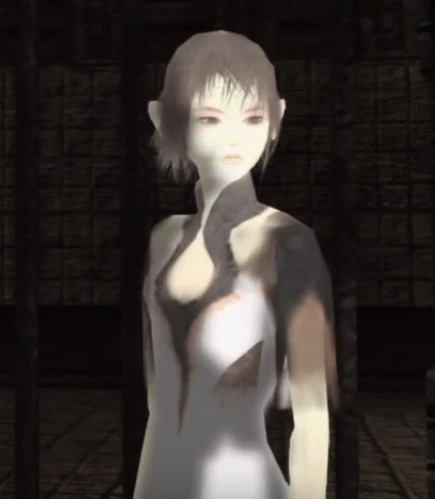
To conclude, I would merely like to add that this relationship between the two works operates at both a conscious and unconscious level. If Ueda watched this film as a child, the above connections become all the more relevant because they speak of a process of long-term assimilation, where the visual themes and concepts of the film acted as a formative reference for the author.
#wanda to kyozou#shadow of the colossus#fumito ueda#isao takahata#horus prince of the sun#太陽の王子 ホルスの大冒険#Taiyō no Ōji Horusu no Daibōken#ワンダと巨像#ico
112 notes
·
View notes
Note
Bloody amazing work. I deeply appreciate your writing, and your archival. I'll definitely be following you, now into the future.
Thank you, this is most encouraging.
7 notes
·
View notes
Text
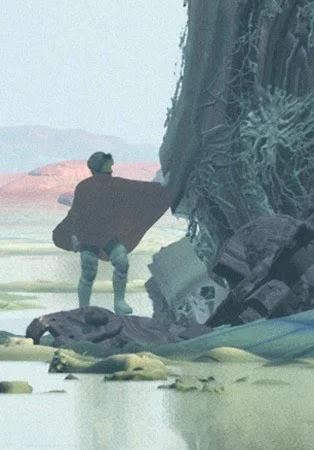

I had never given the last Gen Design teaser image a proper look until this very morning. I glanced at it fleetingly at the time. It reminded me of Nausicaä, which I believe was a common enough reaction.
I spotted this blown-up version entirely by accident and I was instantly reminded of a character design from Fumito Ueda's early 90s portfolio, from a time I believe he was seeking a way into the game industry, having adapted his art style to match potential employer's expectations.
There are a few visible parallels: the apparent leg armour, the long cape/shawl, the helmet, and what appear to be goggles or a visor of sorts. There's also something to be said about the way in which the character's garments and their high neckline folding over.
#gen design#character design#fumito ueda#teaser image#work in progress#portfolio#harmless speculation
16 notes
·
View notes
Text
youtube
Yesterday I tweeted about the long and difficult process of my communication with Kikuko Iwano, the artist behind the cult Macintosh CD-ROM Hikaru Hana (Shining Flower). We've been exchanging emails for the better part of a year but I was not able to make any meaningful progress. I was mostly looking for whatever information and artwork she could provide about the two other interactive projects she was involved with, Phibos: Suisei o Otte, released in 1995 by Mizuki (later renamed Spike); and Lakis ~Minato-machi Musou Kidan~, which I knew had been completed but never published.
In response, the great @mara-ganger pointed out to me that Phibos had been uploaded to Internet Archive earlier this year. Considering I've waited years to play the game, I wasted no time setting up a Macintosh emulation program. I edited out some of the more repetitive parts of my playing session as the game requires going up and down the forest paths until random encounters result in the acquisition of a special item.
A boy named Yoni is looking for his grandfather who went missing. He travels to a mysterious forest named Gurioza where he encounters a fallen star. Finding his grandfather and helping the star back to the firmament appear to be the interactive storybook's ultimate goals. There is a variety of interesting details I've noticed in only a few minutes: for starters, there is a reference to Shining Flower in a framed picture in the wall of a café. There is also an uncanny event in which Yoni meets a Kitsune-like entity who shifts into his shape. The sequence is in beautiful black and white and characters are designed to simulate an eerie motion blur effect (15m45s).
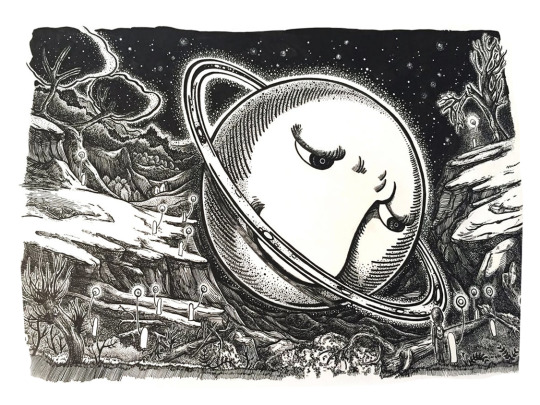


To round it all out, here are some fine pen and brush artwork which Kikuko Iwano produced for the project when she was in her twenties.
#kikuko iwano#Phibos: Suisei o Otte#Hikaru Hana#cd-rom#macintosh#lost media#artwork#footage#Youtube#mizuki#spike
40 notes
·
View notes